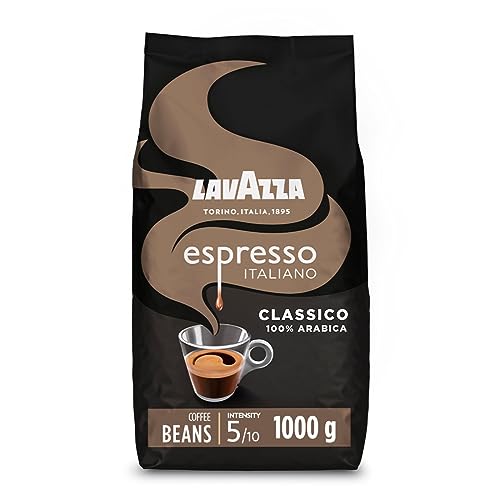What's The Current Job Market For Coffee Beans Types Professionals Lik…
페이지 정보
작성자 Jasmin 작성일24-08-16 11:32 조회181회 댓글0건관련링크
본문
 Coffee Bean Types: Arabica, Robusta, Liberica, and Excelsa
Coffee Bean Types: Arabica, Robusta, Liberica, and ExcelsaIf you're a coffee enthusiast you're probably aware that different kinds of beans have different flavor profiles. Find out more about four of the most sought-after varieties: Arabica, Robusta, Liberica, and Excelsa.
Excelsa beans, which are a variety of Liberica that is grown only in Southeast Asia. They have a sweeter and tarter flavor profile, and are often used in blends of coffee to enhance the flavor.
Arabica
Arabica coffee beans account for 75% of all global production. Arabica beans have a milder and sweeter flavor than Robusta and are available with a variety of flavor profiles. The aroma and taste of coffee are affected by the conditions under which it is grown and the processing methods used.
The word "coffee" is derived from the Arabic word that means berry. Coffee beans are actually seeds that develop inside bright red berries. It is believed that ancient Ethiopian shepherds noticed that their goats became energy-rich after eating these fruits, and the cultivation of coffee quickly spread across the world.
Coffee beans can flourish at high altitudes and thrive in cold temperatures and lots of rain. This is the reason Arabica coffee is thought to be the most delicious kind of strong coffee beans.
Many specialty coffee shops and roasters focus on using ethically-sourced arabica beans and focusing on fair pay for farmers as well as sustainable growing practices. These companies typically blend arabica beans to make unique signature coffees that are suitable for many different methods of brewing. Blending gives control over the aroma, flavor and body, as well as the acidity of coffee. It is generally utilized to create an even and balanced taste that is appealing to a broad audience.
Robusta
Robusta beans (Coffea canephora) are the second most common type of coffee bean grown in the world. They have more caffeine per bean and are more resistant against pests and diseases. They also contain higher levels of chlorogenic acids that are antioxidants naturally found in. These acids can cause oxidation during the brewing process of coffee beans types and create undesirable flavors.
The plant is more robust than the arabica and can be grown in less favorable climates. It can withstand warmer temperatures and does well in direct sunlight. It grows faster and produces more coffee per plant than arabica, making it a cost-effective crop to cultivate.
While it may seem counterintuitive, Robusta and arabica beans are often blended to create coffee blends. If you see the names of countries such as Uganda or Kenya on a coffee bag it's likely there's some robusta too.
Although some roasters exclusively use arabica beans, most do combine the two varieties to reduce costs and preserve quality. To ensure the integrity of the flavor you must select a high quality bean to cup coffee beans from a trusted source. This can be done by purchasing your beans direct from farmers.
Liberica
Liberica beans are more or less football shaped and are therefore distinct from other varieties of coffee beans. They have a distinct aroma that is fruity and floral with the smoky notes. They are often added to other coffee bean types to give them a deeper, more robust taste.
Liberica coffee beans are grown in West Africa and Malaysia (Borneo) as well as in Southeast Asia. They can be found at low altitudes and tolerate hot, humid climates. They also have a better resistance to diseases than Arabica and Robusta.
These qualities make them ideal for growing at home. On the internet, you can purchase seeds from numerous sources. However, it's ideal to purchase the beans from local producers in order to ensure high-quality. The best conditions for growing Liberica coffee include fertile, deep volcano soils with a pH that is moderately acidic and sufficient annual rainfall.
Another kind of coffee bean is Excelsa which was previously considered a distinct species, but has been re-classified as a variant of Liberica. These coffee beans with an oval shape are grown on large coffee plants that can reach 20-30 feet in height at moderate altitudes. They have a distinct taste that is both fruity and tart and has made them a sought-after choice for blends in house. They have a milder flavor and lower caffeine content that is less than Arabica or Robusta but they do have a distinctive depth of flavor.
Excelsa
Although they're the fourth-most popular type of coffee beans, Excelsa beans aren't quite as easy to find as Arabica or Robusta. They were considered to be distinct species of coffee up until 2006, at which point they were reclassified as a synonym for Coffea Liberica var. dewevrei. They are grown in Southeast Asia today and account for 7 percent of the world's production of coffee. These coffee beans are shaped as teardrops and have a dark, mysterious taste. They are often blended to add extra body and a rich tart, ripe fruit taste.
Arabica beans are the most popular and are renowned for their more sweetness. They thrive at higher altitudes and enjoy warm, tropical climates. They also have a hint of acidity. When roasted and brewed correctly they may impart notes like chocolate, nuts or even fruit.
Robusta is the second most-loved coffee around the world. It makes up around 40% of all coffee consumed around the world. Robusta beans are smaller and more round however, they contain twice the amount of caffeine as Arabica. They also taste bitterer than the other two varieties and have a woody, earthy taste.
After you've learned about the four most popular types of coffee beans you can now choose the perfect coffee. If you prefer a smooth and delicate flavor opt for an arabica, or a blend consisting of arabica beans and robusta beans.

댓글목록
등록된 댓글이 없습니다.
